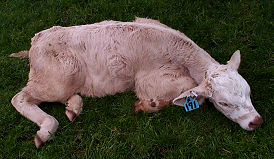Selenium (Se) is an essential nutrient for animals, humans, and microorganisms but it’s role in plant health is more complicated. It is considered beneficial at low levels, but is toxic at higher levels, and there is a fine boundary between these concentrations.
New Zealand soils are generally speaking deficient in Selenium.
Although there are areas where livestock poisoning occurs, much evidence has been accumulated to indicate that agricultural livestock is deficient, or bordering on selenium deficiency, in many areas of the world.
Functions of Selenium
Selenium is an essential biological trace element. It is an essential constituent of several enzymes in which it is present in the form of the unusual amino acid selenocysteine (SeCys).
Excessive levels of Selenium can occur easily. Do not apply more that 10 grams per hectare per year.
| Selenium deficiency in animals |
| Vascular, muscular and/or hepatic lesions |
| White muscle disease |
| Reproduction problems; abortion, pyometra |
Selenium as a chemical element
Selenium is a chemical element with the symbol Se and atomic number 34. It is a nonmetal (more rarely considered a metalloid) with properties that are intermediate between the elements above and below in the periodic table, sulfur and tellurium, and also has similarities to arsenic.
Selenium salts are toxic in large amounts, but trace amounts are necessary for cellular function in many organisms, including all animals. Selenium is an ingredient in many multivitamins and other dietary supplements.
It is a component of the antioxidant enzymes glutathione peroxidase and thioredoxin reductase (which indirectly reduce certain oxidized molecules in animals and some plants). It is also found in three deiodinase enzymes, which convert one thyroid hormone to another.


